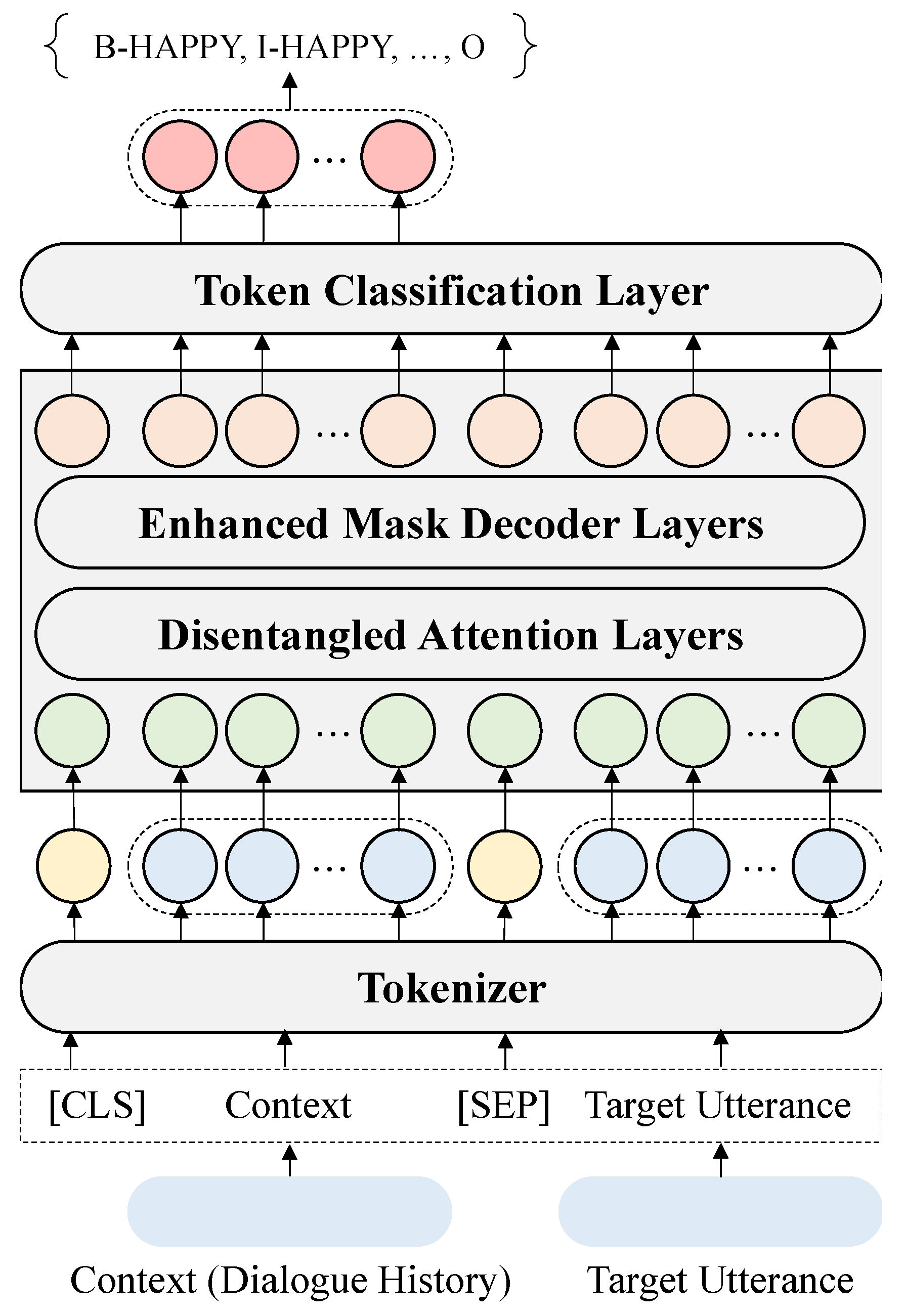Token Classification
What is Token Classification?
Token Classification is a natural language processing (NLP) task where each token (usually a word or a subword) in a text is assigned a specific label. This task is essential for various applications that require understanding and categorizing parts of a text. Token Classification is widely used in various applications, including information extraction, text analysis, and improving search engine results. It helps in structuring unstructured text data, making it easier to analyze and derive meaningful insights.

Where can you find Token Classification models
This is the link to use to filter Hunggingface models for Token Classification:
https://huggingface.co/models?pipeline_tag=token-classification&sort=trending
Our favourite Model Authors:
The most interesting Token Classification project
One of the most interesting Token Classification projects is called CAMeLBERT MSA NER Model.
CAMeLBERT MSA NER Model is a Named Entity Recognition (NER) model that was built by fine-tuning the CAMeLBERT Modern Standard Arabic (MSA) model. For the fine-tuning, we used the ANERcorp dataset. Our fine-tuning procedure and the hyperparameters we used can be found in our paper "The Interplay of Variant, Size, and Task Type in Arabic Pre-trained Language Models. "
Intended uses
You can use the CAMeLBERT MSA NER model directly as part of our CAMeL Tools NER component (recommended) or as part of the transformers pipeline.
https://huggingface.co/CAMeL-Lab/bert-base-arabic-camelbert-msa-nerTypes of Token Classification Tasks
- Sequence labeling: assigning a label to each token in a sequence
- Multi-label classification: assigning multiple labels to each token
- Hierarchical classification: classifying tokens into a hierarchical structure
Examples
- Part-of-speech tagging: identifying whether a word is a noun, verb, adjective, etc.
- Named entity recognition: identifying specific entities such as names, locations, organizations, etc.
- Sentiment analysis: determining the sentiment or emotional tone behind a piece of text
Applications
- Text summarization
- Chatbots and conversational AI
- Language translation
- Information retrieval

Why is Token Classification Important?
Token classification is essential in many NLP applications, including:
- Information extraction: extracting relevant information from unstructured data
- Text generation: generating human-like text based on input prompts
- Question answering: answering questions based on the content of a document or conversation
Applications of Token Classification
Token classification has numerous applications across various industries, including:
- Customer service chatbots: using token classification to understand customer queries and provide accurate responses
- Social media monitoring: using token classification to analyze social media posts and detect trends or sentiments
- Medical diagnosis: using token classification to extract relevant medical information from patient records
Challenges in Token Classification
Despite its importance, token classification poses several challenges, including:
- Data quality: ensuring that training data is accurate and representative of real-world scenarios
- Model complexity: designing models that can handle complex relationships between tokens
- Evaluation metrics: choosing appropriate evaluation metrics to measure model performance
Future Directions in Token Classification
As NLP continues to evolve, token classification will play an increasingly important role in various applications. Some potential future directions include:
- Multimodal token classification: incorporating visual or auditory information into token classification tasks
- Explainability and interpretability: developing techniques to explain and interpret token classification decisions
- Transfer learning: leveraging pre-trained models for token classification tasks
Conclusion
Token classification is a fundamental task in NLP that has far-reaching implications for various applications. By understanding the basics of token classification, we can better appreciate its importance and potential applications. This article has provided a comprehensive overview of token classification, including its definition, examples, applications, and challenges.
References
- Collobert et al. (2011). Natural Language Processing (almost) from Scratch. Journal of Machine Learning Research, 12, 2493–2537.
- Huang et al. (2018). Deep Neural Networks for Natural Language Processing. arXiv preprint arXiv:1809.00796.
- Liu et al. (2020). RoBERTa: A Robustly Optimized BERT Pretraining Approach. arXiv preprint arXiv:1907.11692.
Further Reading
For those interested in exploring token classification further, here are some recommended resources:
- Stanford Natural Language Processing Group
- Allen Institute for Artificial Intelligence
- Google AI Blog
How to setup a Token Classification LLM on Ubuntu Linux
If you are ready to setup your first text classification system follow the instructions in our next page:
How to setup a Token Classification system
Image sources
Figure 1: https://docs.mistral.ai/img/guides/tokenization1.png
Figure 2: https://www.mdpi.com/sensors/sensors-23-02983/article_deploy/html/images/sensors-23-02983-g003.png
More information
- AI Text Classification
- What is AI Token classification
- What is Table Question Answering in AI
- What is Question Answering in AI
- What is Zero-Shot Classification in AI
- What is Translation in AI
- What is Text AI Summarization
- What is Feature Extraction in AI
- What is Text Generation in AI
- What is Text2Text Generation in AI
- What is Fill-Mask in AI
- What is Sentence Similarity in AI

